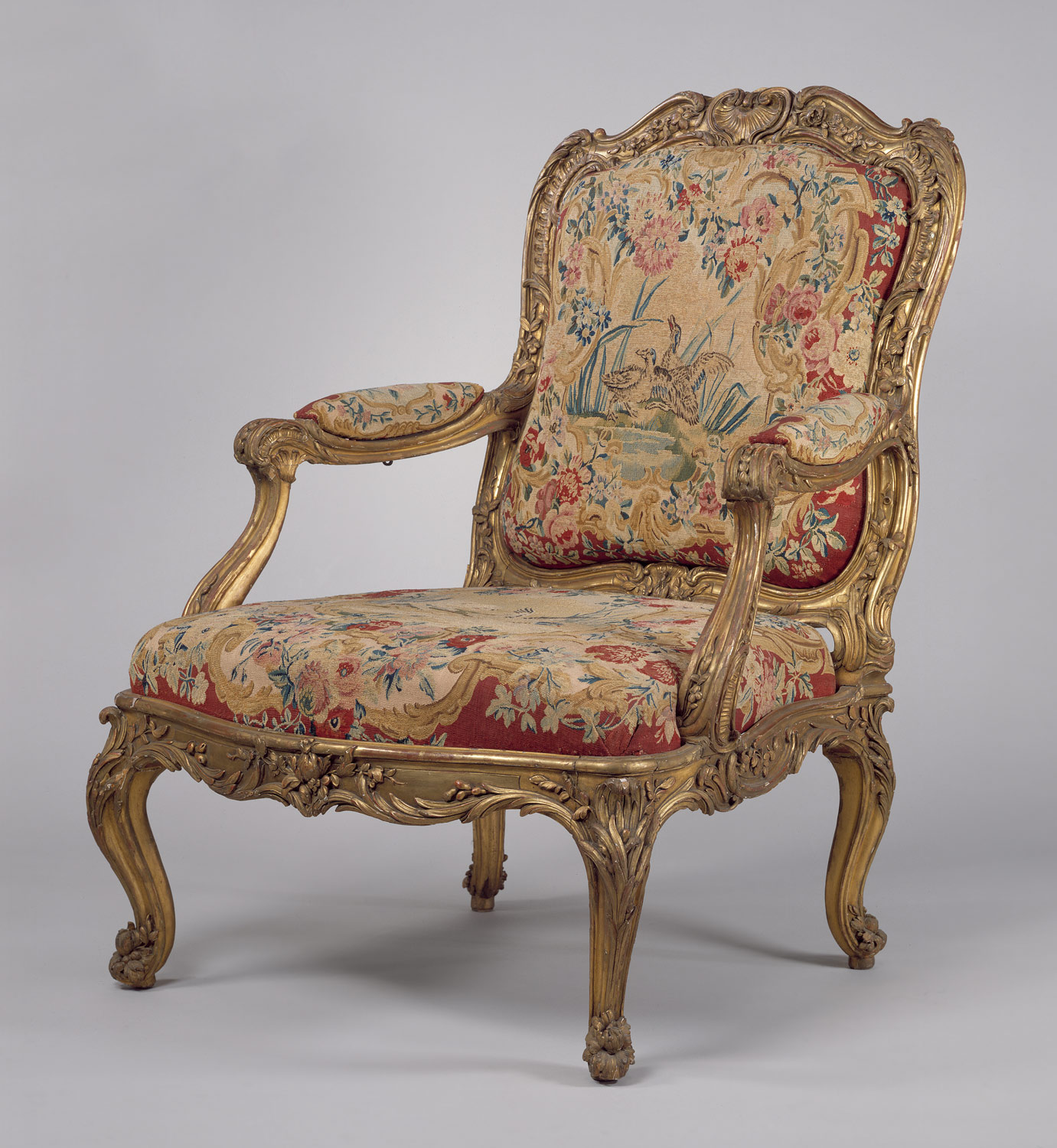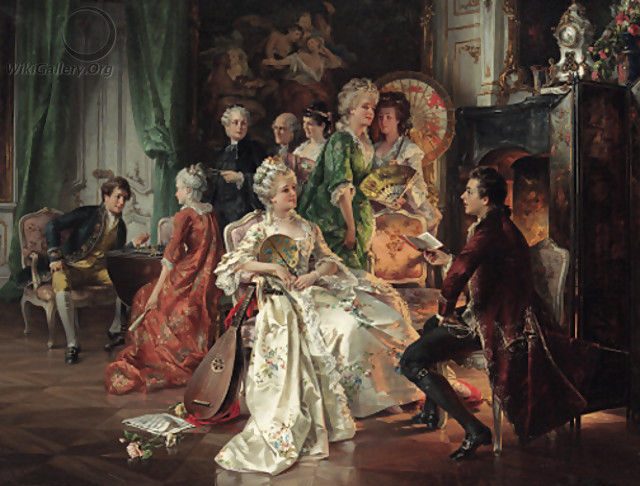
Armchair (fauteuil à la reine) (part of a set), frame by Nicolas-Quinibert Foliot, probably after a design by Pierre Contant d’Ivry, after designs by Jean-Baptiste Oudry, tapestry woven at Beauvais, ca. 1754-56, Paris. 40 7/8 × 29 × 26 in. Carved and gilded beech; wool and silk tapestry. Photo: Metropolitan Museum of Art, New York (66.60.2).
The fauteuil à la reine armchair belonged to the Danish ambassador of the court of Versailles, Baron Johann Ernst Bernstorff. The diplomat was described as youthful and witty, possessing both finesse and taste. All of these qualities are embodied by the fauteuil à la reine armchair, with which he furnished his tapestry room in Copenhagen. [1]
The lighthearted composition of animals, birds, and flowers on the tapestry reflects the diplomat’s “youthful” spirit. The Rococo-style frame, with its lucid shapes and floral ornaments, captures the aristocrat’s particularly French “taste.” It is not hard to picture the Danish ambassador sitting comfortably on the low legged armchair, entertaining a crowd of people in Copenhagen. His “finesse” truly comes through on the fauteuil à la reine armchair.

“An Evening’s Entertainment” by Carl Harper, 1836-1897, oil on Canvas
Return to: Making the Chair
[1] Daniëlle Kisluk-Grosheide, 2010, from http://www.metmuseum.org/toah/works-of-art/66.60.2/
[2] ibid.
[3] ibid.